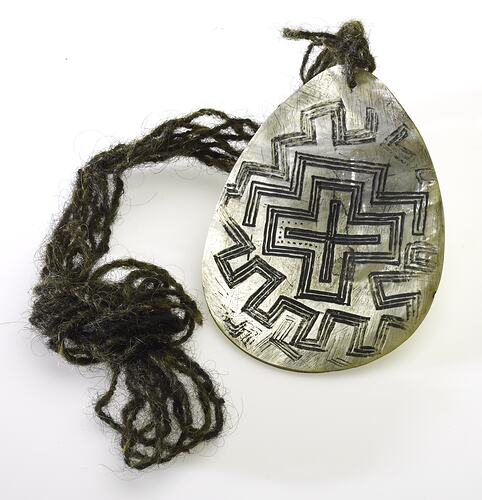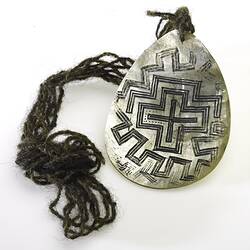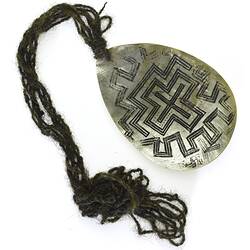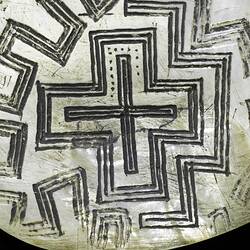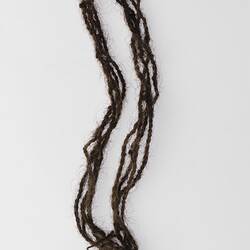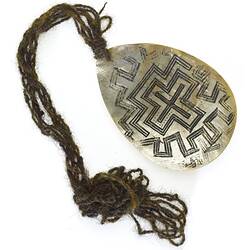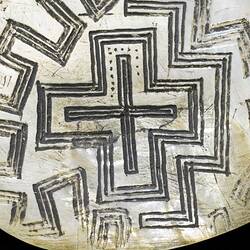Summary
Pearl shells from Broome and the Kimberleys were classically incised with zigzag and linear patterns, which are thought to represent the shadows of storm clouds cast on the ground and the lightning associated with these. The dots between the lines are droplets of rain. These pearl shells are traded over huge distances across the continent and those that find their way to central Australia are used in rain-making ceremonies. The anthropologist Charles P. Mountford recorded a ritual conducted by the Pitjantjatjara people in which such shells were used successfully to produce rain. These highly prized objects of trade were found as far afield as Port Augusta in South Australia.
Physical Description
An ovoid shaped pearl shell incised with geometric patterns infilled with pigment. A length of human hair string is threaded through a hole drilled in the top.
More Information
-
Object/Medium
Ornament, neck
-
Maker
-
Cultural Groups
-
Locality
-
Date Produced
-
Date Collected
-
Object Measurements
560 mm (Length), 120 mm (Width), 50 mm (Height)
-
Agent
Mr Robert Edwards - Museum of Victoria, 1970
Bob Edwards was the agent for the Christensen Fund in the 1970s and purchased significant examples of Aboriginal artefacts from auctions, galleries and private collections in Australia and overseas. -
Keywords
-
References
[Book] Ryan, Judith & Batty, Philip. 2011. Origins of Western Desert Art: Tjukurrtjanu.
[Book] Museum Victoria. 2004. Treasures of the Museum. Victoria, Australia. 206.
-
Collection Names
-
Type of item
-
Discipline
-
Category
-
Collecting Areas
